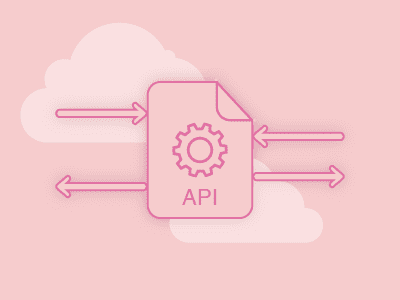APIs Are Driving the Future
 Last Moment Tuitions
Last Moment Tuitions
Blog: A Brief Introduction to APIs.
APIs Are Driving the Future
The number of functionalities and microservices in applications is increasing at a breakneck pace these days. With this rush to provide more and more functionalities and construct more apps at an incredible rate, the reliance on APIs (application programming interfaces) has also soared. This API introduction covers API fundamentals such as common types of web-based APIs and the future of APIs.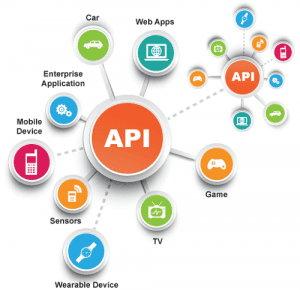
First and foremost, what is an API?
An API is a software intermediary that enables dependent applications to communicate with one another. APIs are a set of protocols, routines, and developer tools that allow software developers to extract and share data while also allowing applications to interact in a user-friendly manner.
The use of APIs has grown like never before, whether it’s web APIs that connect web applications with various platforms or APIs used by IoT devices to collect and process data.
Abstraction hides everything but what the user cares about, making it easy to use.
Types of web-based APIs
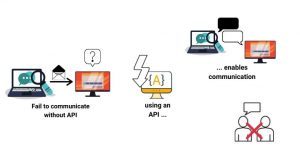
- REST-based APIs – One of the most profitable categories of web-based APIs is REST (Representational State Transfer). The data format used by REST-based APIs is JSON. Because these APIs are simple, they can be ideal for beginners.
- SOAP-based APIs – In terms of usability, SOAP-based APIs (Simple Object Access Protocol) can be rather complicated. These APIs employ the Simple Object Access protocol. This allows them to provide higher degrees of protection while also improving their accuracy.
- GraphQL-based APIs – GraphQL is a web-based API query and manipulation language that is open-source. It enables constructing a clear pathway for the runtime, which is critical for fulfilling queries with pre-existing data, much easier. When GraphQL organises data into a graph format, it uses the interface-id parameter.
- XML-RPC- XML-RPC (Extensible Markup Language-Remote Procedure Call) is a sort of API protocol that differs from others in terms of data security and the usage of the XML format, which was created specifically for data transfer.
APIs are universally understood :
- An API is, at its most basic level, a mechanism that allows one application or service to access a resource in another application or service.
- Some APIs impose a strict framework on developers, such as SOAP or XML-RPC.
- REST APIs, on the other hand, can be written in almost any programming language and support a wide range of data formats.
In general, the API accomplishes two goals:
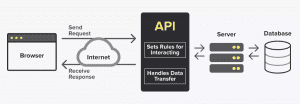
- For starters, it establishes guidelines for dealing with it.
- “If you arrange your request like this, I’ll provide you data that’s structured like this,” the API says. If you don’t arrange your request in the way the API expects, it won’t understand what you’re asking for and will respond with an error.
- Data transmission between the server and the code making the request is also handled by the API. The API is a software that serves as a funnel between the web application and the server and database.
- It will run a function after it gets a valid request (or multiple functions).This is the level of complexity that the API hides from the user.
For example, The MyApiApp programme sends an HTTP request to the Facebook servers in order to access Facebook features. In the HTTP request, the application specifies the API function it wishes to use (e.g. return profile information).
Start integrating APIs into your app.
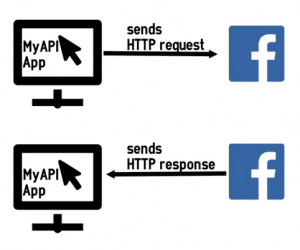
- To connect to an API, you must first connect your programme to an API endpoint. This may be thought of as a two-way connection. The endpoint connected to your software delivers a request, whereas the API endpoint responds with a particular answer.
- The endpoint is a URL that requests and grants direct access to an API’s resources to the client.
- The documentation for each of these methods is generally included in an API’s documentation.
When reading the documentation, you want to make sure that you find the answer to these four questions:

- What kind of API is it? (RESTful, SOAP, JavaScript or XML-RPC)
- What data format is used in the request? (JSON, HTML or XML)
- What kind of authorization is used/required? (OAuth 1.0, OAuth 2.0, HTTP Basic Authentication).
- What functions are available for me as a developer?
- There are hundreds of APIs available, each with its own set of connection rules. While some APIs are available for free and open-source, some need a membership.
- Although some APIs are simple and easy with no prerequisites, others may need you to meet requirements such as obtaining an API key or registering for a developer’s account before you may connect to their endpoints.
Conclusion –
- Using APIs in your app allows you to accomplish projects more quickly. Although some API documentation is technical in nature, there are several that are helpful to novices.
- However, as previously said, in order to get the most out of any API from which you wish to extract data, you must read the documentation carefully and follow the guidelines for connecting to it.
- Although we’ve used JavaScript in our examples, most APIs accept other programming languages as well, depending on the type of API. Language support information may be found in any API’s documentation. Also, keep in mind that the examples we presented here are only a few of the numerous ways APIs may be utilised.


